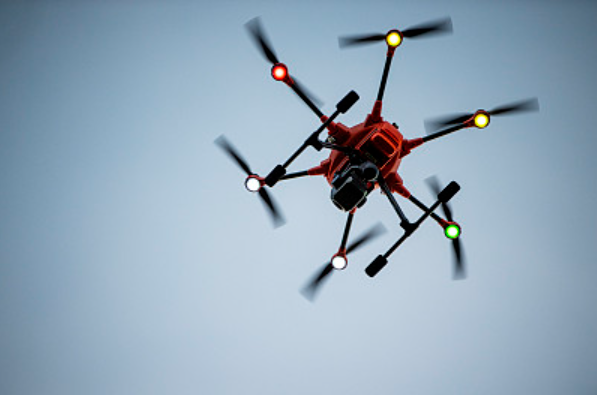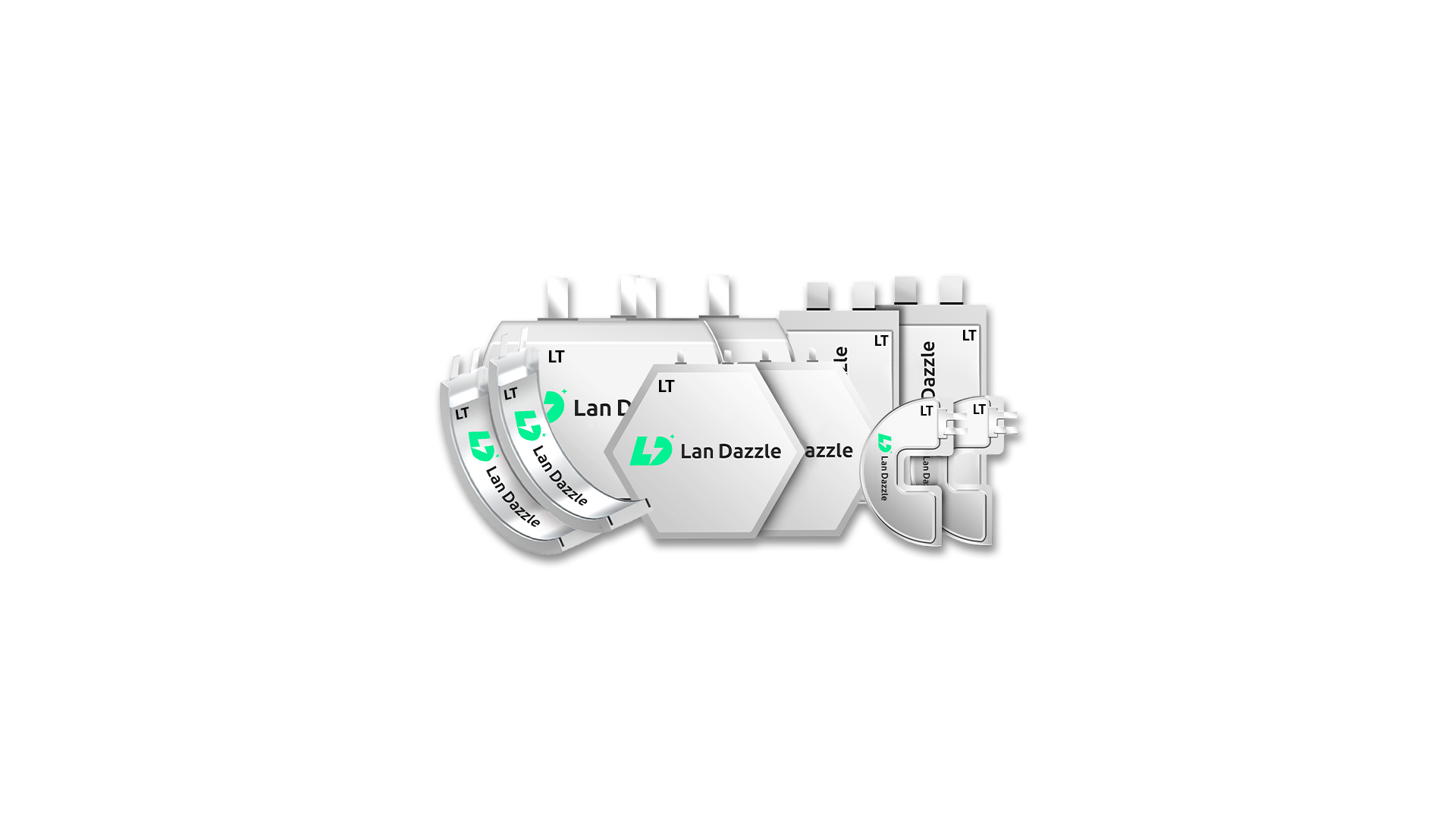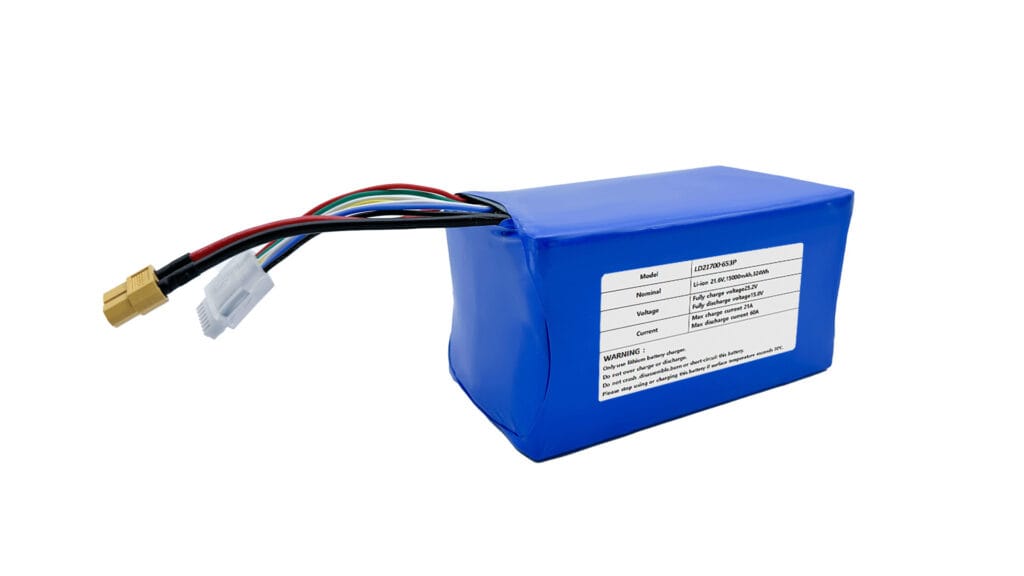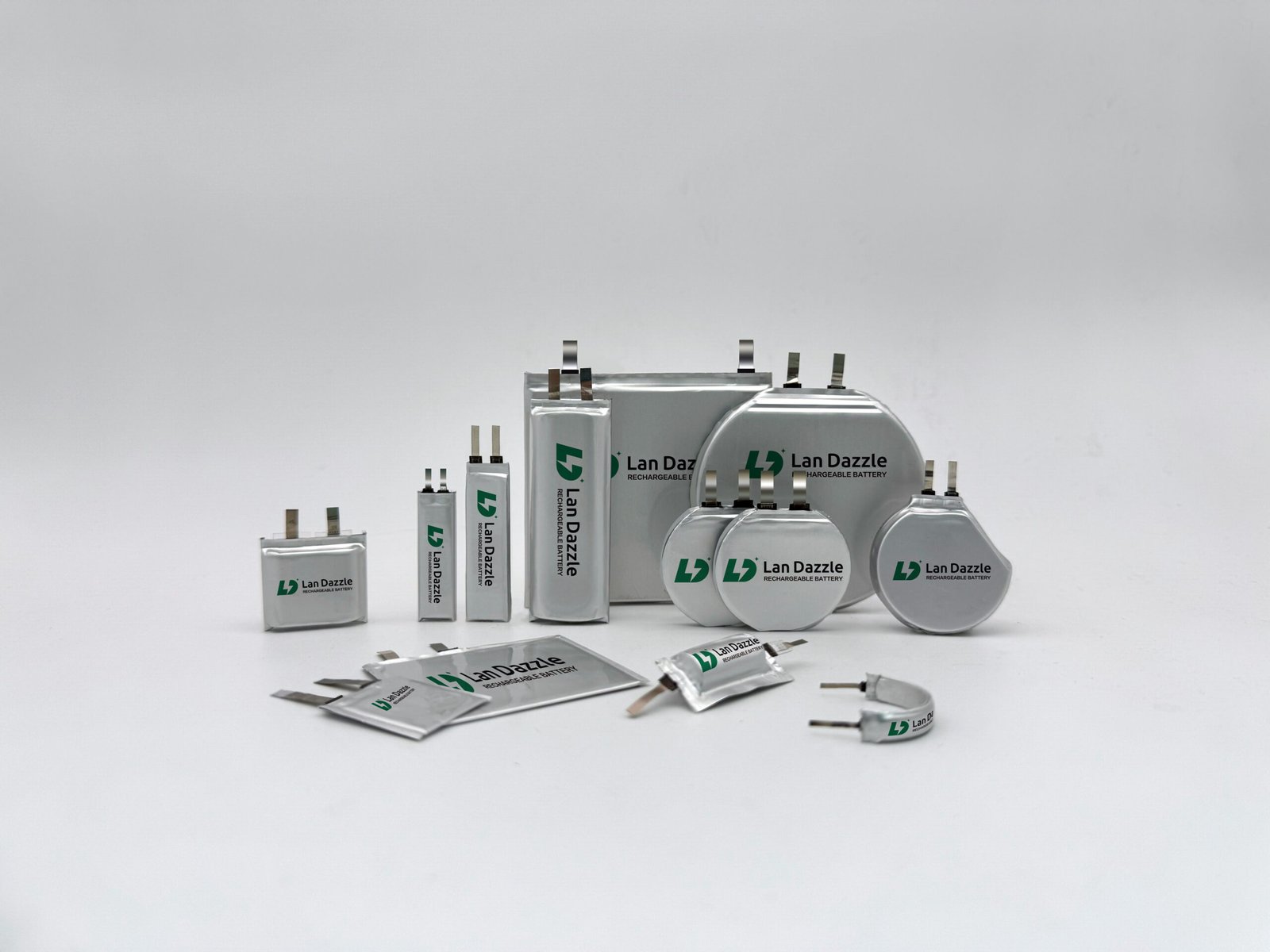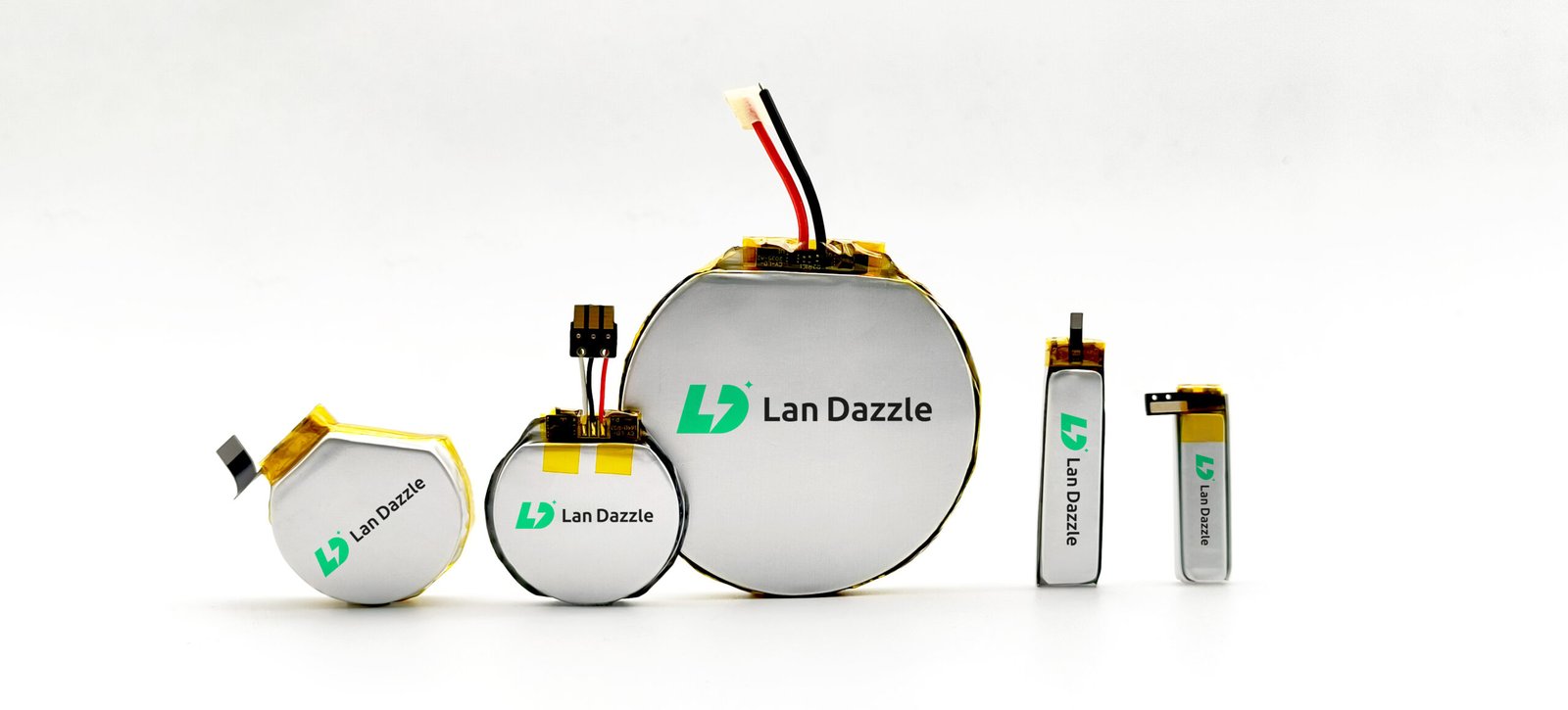When it comes to maximizing the performance of your FPV drone, choosing the right battery for FPV drone is crucial. The battery not only powers your drone but also significantly impacts its flight time, speed, and overall efficiency. With so many options available, selecting the best battery can be overwhelming. This guide will break down everything you need to know about FPV drone batteries.
Types of FPV Drone Batteries
1. LiPo Batteries (Lithium Polymer)
The go-to choice for FPV drones, LiPo batteries offer high energy density and discharge rates. They come in 1S to 6S configurations (cell counts), with 4S and 6S being most popular for 5-inch drones. A 6S 1,500mAh LiPo typically provides 4–6 minutes of aggressive flying.
2. LiHV Batteries (Lithium High Voltage)
LiHV packs charge to 4.35V per cell (vs. 4.2V for LiPo), offering ~10% more capacity. Ideal for pilots needing extra flight time, but they require compatible chargers and careful voltage management.
3. Li-ion Batteries
Lithium-ion batteries provide higher capacity (e.g., 3,000mAh) but lower discharge rates. They’re suited for long-range FPV drones prioritizing endurance over speed.
How to Choose Battery for FPV Drone
-
Voltage (Cell Count): FPV drone batteries are categorized by the number of cells connected in series, denoted as 1S, 2S, 3S, etc. Each cell has a nominal voltage of 3.7V. Therefore, a 4S battery has a nominal voltage of 14.8V (3.7V x 4). Higher voltage batteries can provide more power, resulting in increased thrust and speed. However, it’s essential to ensure that your drone’s electronic components, such as motors and electronic speed controllers (ESCs), are rated to handle the chosen voltage.
-
Capacity (mAh): Measured in milliamp-hours (mAh), the capacity indicates how much energy the battery can store. A higher capacity battery can provide longer flight times but also adds more weight. For instance, a 1500mAh battery may offer around 3-5 minutes of aggressive flight time on a 5-inch racing drone, while a 2200mAh battery might extend that time but at the cost of added weight, potentially affecting agility.
-
Discharge Rate (C-Rating): The C-rating signifies how quickly a battery can discharge its energy. A higher C-rating means the battery can deliver more current, which is crucial for high-performance maneuvers. For example, a 1500mAh battery with a 75C rating can theoretically deliver 112.5A (1500mAh x 75C / 1000). Ensuring the battery’s discharge rate aligns with your drone’s power requirements is vital to prevent voltage sag and potential damage.
-
Weight and Size: The physical dimensions and weight of the battery should be compatible with your drone’s design and payload capacity. An oversized or heavy battery can disrupt the drone’s center of gravity and hinder performance.
-
Connector Type: Ensure the battery’s connector matches your drone’s power leads. Common connectors include XT60, XT30, and Deans (T-Plug). Using mismatched connectors can lead to poor electrical connections or require additional adapters.
Practical Application Example
Selecting the right battery for an FPV drone depends on various factors, including the drone’s size, purpose, and power demands. Below are three real-world application scenarios illustrating how different FPV pilots choose their batteries based on their specific needs.
1. FPV Racing Drone – Speed and Agility Priority
A 5-inch FPV racing drone designed for high-speed competition requires a battery that delivers rapid power bursts while maintaining lightweight agility. In this case, a 4S (14.8V) or 6S (22.2V) LiPo battery is a popular choice.
-
Example Setup:
- Frame: 5-inch racing frame
- Motors: 2207 2450kV (for 4S) or 1850kV (for 6S)
- Battery: 1500mAh 6S 100C LiPo
- Flight Time: ~3-4 minutes (high-intensity racing)
- Why this battery?
- High voltage (6S) ensures faster response and quicker acceleration.
- 100C discharge rate prevents voltage sag during rapid throttle changes.
- 1500mAh capacity offers a balance between flight time and weight.
-
Outcome:
- Increased top-end speed, better punch-outs, and smoother cornering.
- Shorter flight times but optimal performance for competitive racing.
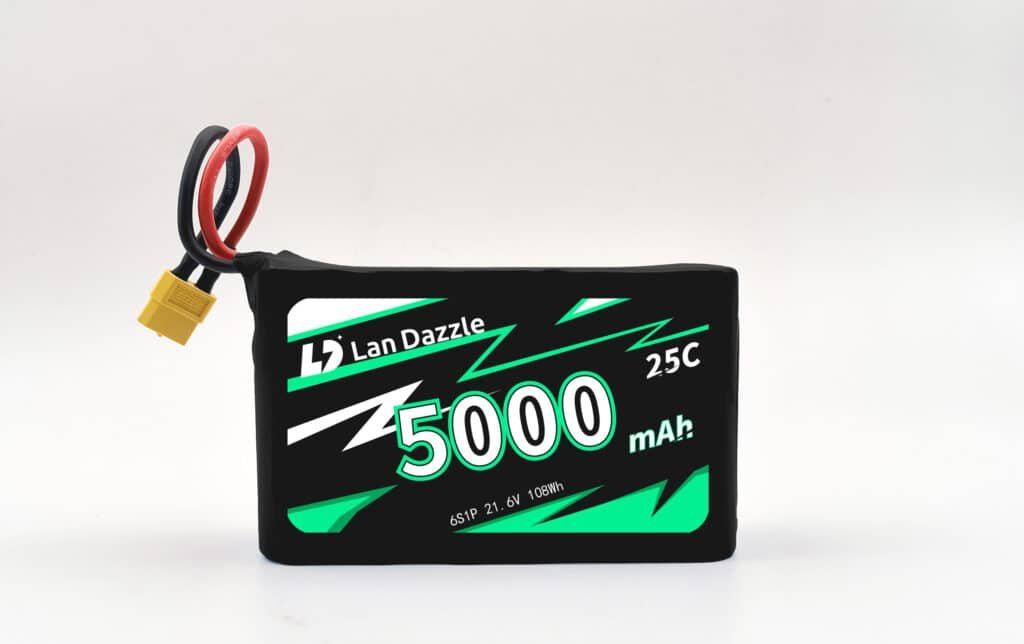
2. Freestyle FPV Drone – Power and Smooth Control
Freestyle pilots focus on smooth acrobatic movements, requiring a balance between power and endurance. A 4S or 6S LiPo battery with a capacity between 1300mAh to 1800mAh is commonly used to ensure enough power without adding too much weight.
-
Example Setup:
- Frame: 5-inch freestyle frame
- Motors: 2306 1750kV (for 6S)
- Battery: 1550mAh 6S 90C LiPo
- Flight Time: ~4-6 minutes
- Why this battery?
- Provides a good balance of flight time and power delivery.
- Smooth throttle control for cinematic tricks like power loops and rolls.
- 90C discharge rate ensures steady power without excessive sag.
-
Outcome:
- Longer flight time compared to racing drones.
- Consistent power delivery for precision aerial tricks.
3. Long-Range FPV Drone – Endurance and Efficiency
Long-range FPV drones prioritize extended flight times and efficiency over rapid acceleration. Lithium-Ion (Li-ion) batteries are often preferred over LiPo due to their higher energy density and lower discharge rate, allowing flights that last 15-30 minutes or more.
-
Example Setup:
- Frame: 7-inch long-range frame
- Motors: 2806.5 1300kV (optimized for efficiency)
- Battery: 4000mAh 4S Li-ion pack
- Flight Time: 20-30 minutes
- Why this battery?
- Li-ion batteries hold more charge per gram, extending flight duration.
- Lower discharge rate (10C-15C) is sufficient for cruising rather than aggressive flying.
- Lighter weight for better flight efficiency over long distances.
-
Outcome:
- Ideal for exploring vast landscapes and capturing stunning aerial views.
- Improved battery lifespan compared to LiPo packs.
- Reduced risk of voltage sag during extended flights.
Choosing the Right Battery Based on Your FPV Drone’s Purpose
| Drone Type | Recommended Battery Type | Capacity (mAh) | Voltage (S) | C-Rating |
|---|---|---|---|---|
| FPV Racing | LiPo | 1300-1600 | 4S-6S | 75C+ |
| Freestyle | LiPo | 1300-1800 | 4S-6S | 75C+ |
| Long-Range | Li-ion/LiPo | 3000-5000 | 4S-6S | 10C-50C |
| Cinewhoop | LiPo | 850-1300 | 4S | 30C-75C |
| Micro/Tiny Whoop | LiPo | 300-650 | 1S-2S | 25C+ |
By choosing the right battery based on your drone type and flying style, you can achieve the best balance between power, efficiency, and flight duration.
Source:FPV Drone Battery Guide
How Long Does an FPV Drone Battery Last?
The lifespan of an FPV drone battery can be evaluated in two key aspects: flight time per charge and overall battery longevity (charge cycles).
1. Flight Time Per Charge
The flight time of an FPV drone battery depends on various factors, including battery capacity, voltage, drone weight, flight style, and weather conditions. Below are estimated flight times based on different drone setups:
| Drone Type | Battery Specs (Example) | Estimated Flight Time |
|---|---|---|
| Tiny Whoop | 1S 450mAh 25C LiPo1S 450mAh 25C | 3-5 minutes |
| 5-inch Racing | 6S 1500mAh 100C LiPo6S 1500mAh 100C | 3-4 minutes |
| 5-inch Freestyle | 6S 1550mAh 90C LiPo6S 1550mAh 90C | 4-6 minutes |
| Cinewhoop | 4S 1300mAh 75C LiPo4S 1300mAh 75C | 5-7 minutes |
| Long-Range | 4S 4000mAh Li-ion4S 4000mAh | 20-30 minutes |
- Racing drones consume power quickly due to their aggressive maneuvers.
- Freestyle drones have slightly longer flight times but still demand high power output.
- Cinewhoops and long-range drones are optimized for efficiency, leading to extended flight durations.
2. Battery Lifespan (Charge Cycles)
On average, a high-quality LiPo battery can last 100-200 charge cycles before its performance significantly degrades, while a Li-ion battery can last 300-500 cycles due to its lower discharge rates. However, poor battery maintenance can reduce this lifespan drastically.
How to Maintain an FPV Drone Battery for Maximum Lifespan
Proper battery maintenance is crucial for safety and longevity. Follow these best practices to extend the life of your FPV drone battery:
1. Charging Tips
✅ Use a quality charger – Always use a smart balance charger to ensure each cell charges evenly.
✅ Charge at 1C – Charging at 1C (e.g., 1.5A for a 1500mAh battery) helps maintain battery health. Fast charging (higher than 1C) generates excessive heat and reduces lifespan.
✅ Never overcharge – A fully charged LiPo cell voltage should not exceed 4.2V, and a Li-ion cell should not exceed 4.1V per cell. Overcharging can cause swelling and even fire hazards.
✅ Avoid deep discharges – Do not drain a LiPo below 3.5V per cell, as deep discharges can cause permanent capacity loss.
2. Proper Storage
✅ Keep at storage voltage – If not flying for a few days, store LiPo batteries at 3.8V per cell to prevent degradation.
✅ Store in a cool, dry place – Heat accelerates LiPo degradation. Store batteries at temperatures between 15-25°C (59-77°F).
✅ Use a LiPo-safe bag – Store batteries in a fireproof LiPo bag or metal container to minimize fire risks.
3. Safe Battery Usage
✅ Inspect before use – Check for puffiness, physical damage, or abnormal heating. A swollen battery should be discarded.
✅ Avoid overloading – Ensure your battery’s C-rating is sufficient for your drone’s power demands. A low C-rating under heavy loads causes excessive heat and damage.
✅ Handle with care – Do not puncture or short-circuit the battery. A damaged LiPo can ignite violently.
4. Extending Battery Lifespan
✅ Cycle your batteries – If a LiPo has been stored for a long time, cycle it (charge/discharge) a few times before regular use.
✅ Balance charge regularly – Use the balance charge function every 3-5 cycles to ensure all cells remain equal.
✅ Use the right connectors – Make sure battery connectors match your drone’s power leads to prevent sparking or poor connections.
By following these maintenance tips, you can maximize flight time, prolong battery lifespan, and ensure safe drone operations.
Frequently Asked Questions (FAQs)
-
How should I store my FPV drone batteries?
- Store batteries at a voltage of approximately 3.8V per cell, known as storage charge. Keep them in a cool, dry place away from direct sunlight and flammable materials.
-
What are the signs of a failing battery?
- Indicators include noticeable puffiness, reduced flight times, significant voltage sag under load, or physical damage. If any of these signs are present, it’s advisable to discontinue use and dispose of the battery properly.
-
Can I use different C-rated batteries on my drone?
- Yes, but ensure the C-rating meets or exceeds your drone’s current draw requirements. Using a battery with a lower C-rating than needed can result in voltage sag and potential damage.
-
Is it safe to use a damaged battery?
- No, using a damaged battery poses significant risks, including fire hazards. Always inspect batteries before use and avoid using any that show signs of damage.
Landazzle Custom Battery Solutions
At Landazzle, we specialize in crafting custom battery solutions tailored to your FPV drone’s specific needs. Our batteries are designed for optimal performance, ensuring you achieve the best balance between power, weight, and flight time. Whether you’re a hobbyist or a professional pilot, Landazzle has the perfect power solution for you. If you have any questions or needs, do not hesitate to contact us at landazzle.com.
